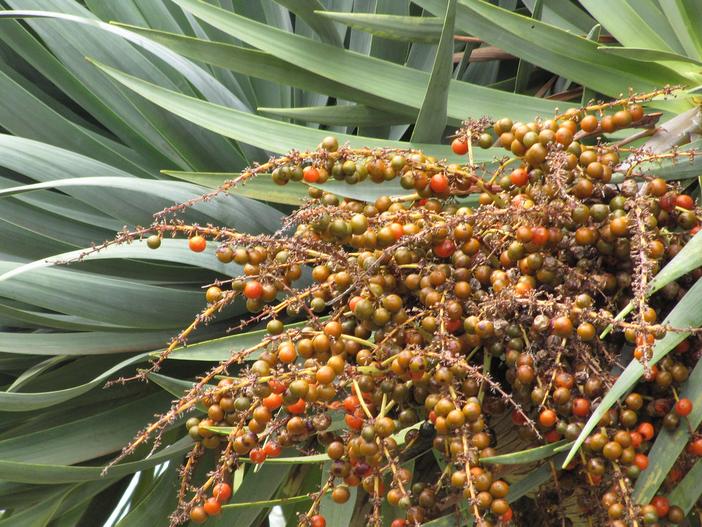Canary Islands Dragon Tree
(Dracaena draco)
Canary Islands Dragon Tree (Dracaena draco)
/
/

Forest and Kim Starr
CC BY 2.0
Image By:
Forest and Kim Starr
Recorded By:
Copyright:
CC BY 2.0
Copyright Notice:
Photo by: Forest and Kim Starr | License Type: CC BY 2.0 | License URL: https://creativecommons.org/licenses/by/2.0/ | Uploader: Starr Environmental | Publisher: Flickr











































































Estimated Native Range
Summary
Dracaena draco, commonly known as Canary Islands Dragon Tree, is an evergreen tree native to the subtropical woodlands of the Canary Islands, Cape Verde, Madeira, and locally in western Morocco. It thrives on cliffs and in rocky, arid areas where it is an integral part of the region’s unique ecology. The tree can live for centuries, reaching heights of up to 15 meters (49 feet) with a trunk circumference exceeding 5 meters (16 feet). Initially, the bark is smooth, becoming rough and more textured with age. The Dragon Tree is a monocotyledonous plant, characterized by its branching growth pattern and currently classified within the Asparagaceae family.
The Dragon Tree is notable for its distinctive silhouette, with a single stem in its youth that later branches out after flowering. The tree blooms with white, lily-like perfumed flowers, which are succeeded by coral berries. This branching pattern creates an umbrella-like canopy over time. It is a slow grower, taking about a decade to reach 1.2 meters (4 feet), but under optimal conditions, it can grow more rapidly. This species is valued for its sculptural form and is often used in xeriscaping due to its low water requirements. It is well-suited for parks, gardens, and sustainable landscapes that prioritize water conservation. Dracaena draco prefers full sun exposure and soils with good drainage, although it can tolerate a range of soil types. While generally low-maintenance, it can be susceptible to scale insects and root rot if overwatered.CC BY-SA 4.0
The Dragon Tree is notable for its distinctive silhouette, with a single stem in its youth that later branches out after flowering. The tree blooms with white, lily-like perfumed flowers, which are succeeded by coral berries. This branching pattern creates an umbrella-like canopy over time. It is a slow grower, taking about a decade to reach 1.2 meters (4 feet), but under optimal conditions, it can grow more rapidly. This species is valued for its sculptural form and is often used in xeriscaping due to its low water requirements. It is well-suited for parks, gardens, and sustainable landscapes that prioritize water conservation. Dracaena draco prefers full sun exposure and soils with good drainage, although it can tolerate a range of soil types. While generally low-maintenance, it can be susceptible to scale insects and root rot if overwatered.CC BY-SA 4.0
Plant Description
- Plant Type: Tree
- Height: 15-25 feet
- Width: 15-25 feet
- Growth Rate: Slow
- Flower Color: White, Cream
- Flowering Season: Summer
- Leaf Retention: Evergreen
Growth Requirements
- Sun: Full Sun
- Water: Low
- Drainage: Medium
Common Uses
Bee Garden, Drought Tolerant, Fragrant, Low Maintenance, Rock Garden
Natural Habitat
Subtropical woodlands, cliffs, and rocky areas in the Canary Islands, Cape Verde, Madeira, and western Morocco
Other Names
Common Names: Dragontree, Drago
Scientific Names: , Dracaena draco, Draco draco, Asparagus draco, Dracaena resinifera, Draco arbor, Draco arbor oppr, Draco draco publ, Draco dragonalis, Drakaina draco
GBIF Accepted Name: Dracaena draco (L.) L.